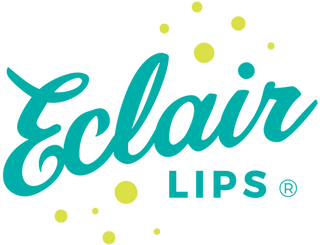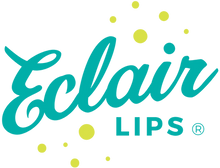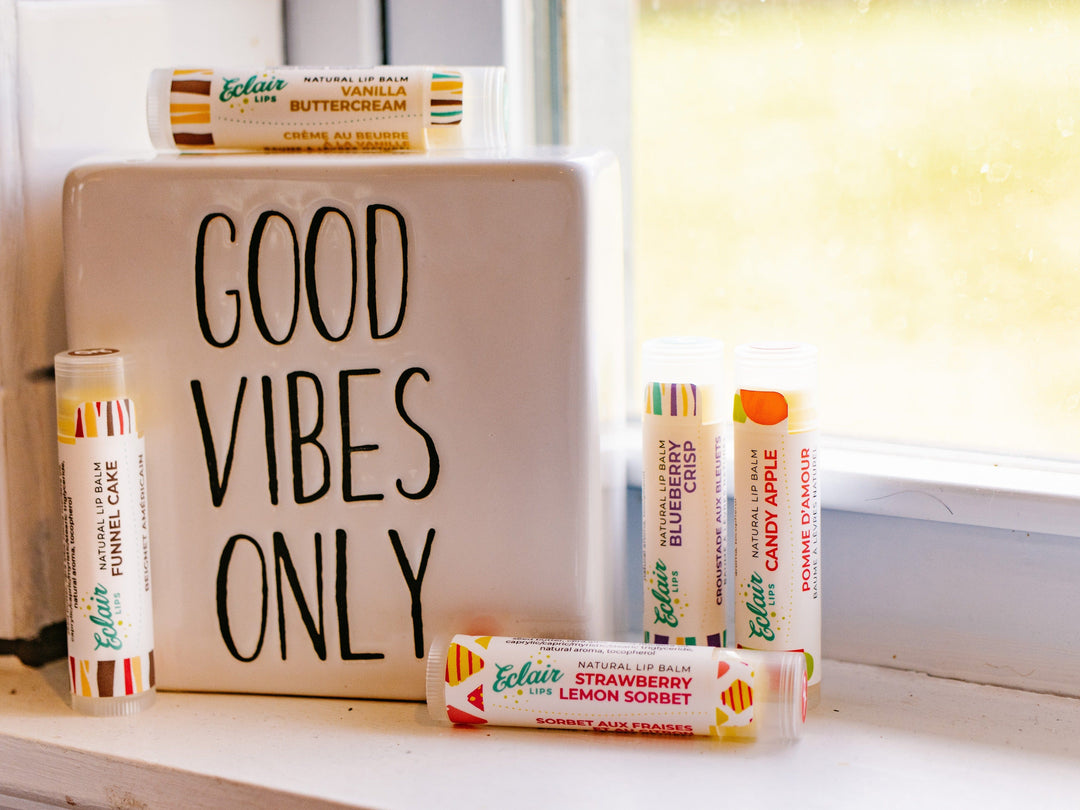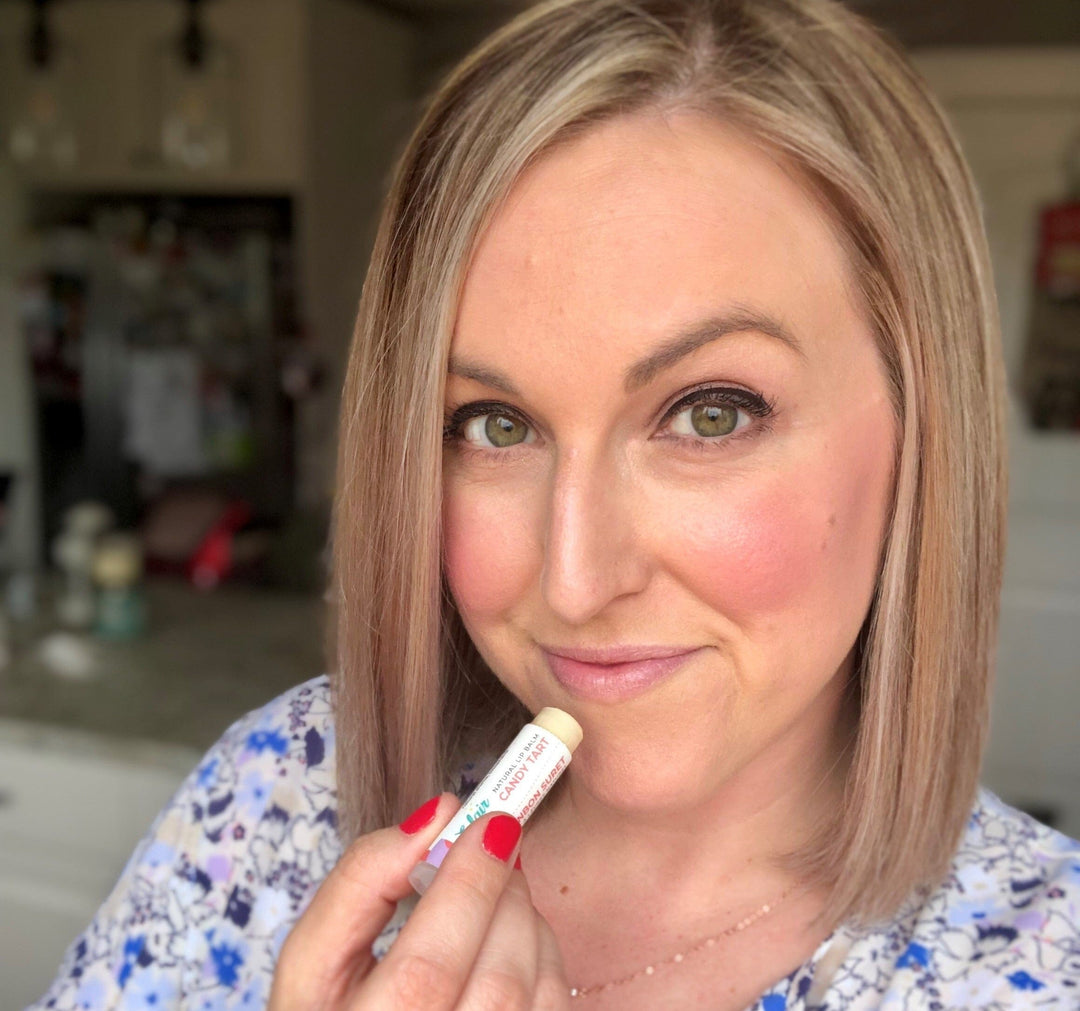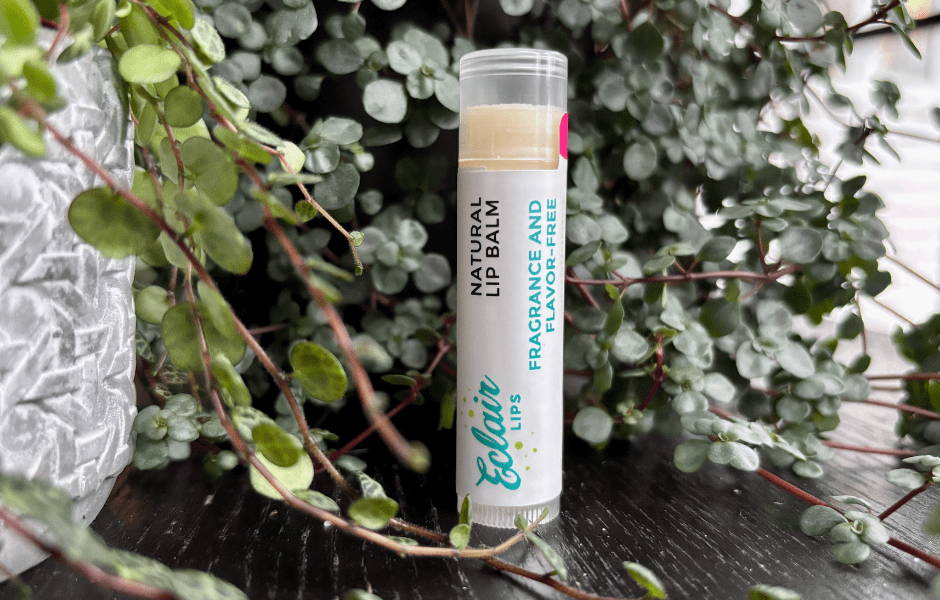How to Use Lip Scrub: Your Complete Guide to Softer, Smoother Lips
How to Use Lip Scrub: Your Complete Guide to Softer, Smoother Lips
There's quite a bit of confusion about lip scrubs, and honestly, it makes sense. You've got one friend who swears by her sugar scrub that she rinses off after 30 seconds, and another who uses an exfoliating balm that she just works in like regular lip balm. They're both calling them "lip scrubs," but they're actually using completely different products with different techniques.

The real issue is that not all exfoliating lip products work the same way. If you're treating an exfoliating balm like a traditional rinse-off scrub, you're missing out on the moisturising benefits. And if you're trying to work in a traditional scrub instead of rinsing it off, you'll end up with a gritty mess. Knowing which type you have and how to use it properly makes all the difference.
Quick Takeaway
- Rinse-off scrubs need 30 seconds of gentle massage on damp lips, then wash away completely and follow with balm
- All-in-one exfoliating balms work like regular lip balm—apply and massage until they sink in, no rinsing
- Rinse-off scrubs work best 1-2 times weekly to prevent over-exfoliation
- Exfoliating balms are mild enough for regular use and gradually smooth lips over time
Contents
Rinse-Off Scrubs: What You Need to Know
Traditional lip scrubs typically have coarse sugar or salt suspended in oils. Dermatological guidance on lip exfoliation is pretty clear: these products should only stay on your lips for about 30 seconds of gentle massage, then you need to rinse them away.
Start by dampening your lips with water (never scrub dry lips, since that creates too much friction and can cause tiny tears). Scoop out a small amount—about the size of a pea—and use light circular motions for 30 seconds. You're not trying to sand your lips down, just loosening the dead skin.
After rinsing thoroughly with lukewarm water, grab a nourishing balm and apply it right away. Freshly scrubbed lips need that moisture immediately, and skipping this step leaves them drier than when you started.
Think of scrubbing and moisturising as two separate but connected steps. One doesn't work without the other. And since your lips have a thin protective barrier that's easily damaged, stick to using these rinse-off scrubs just once or twice a week. If your lips ever look red or feel raw after scrubbing, you're either doing it too often or pressing too hard.
All-in-One Exfoliating Balms: A Different Approach
Exfoliating balms like our Eclair Lips exfoliating collection work on a completely different principle. You apply them exactly like regular lip balm, gently massage until they're absorbed, and that's it—no water, no rinsing, no separate moisturising step.
The difference is in the formula. These balms contain finer sugar crystals suspended in a rich blend of cocoa butter, beeswax, and coconut oil. When you massage them into your lips, the sugar gently buffs away dead skin while the nourishing ingredients moisturise at the same time.
You can wipe away any remaining bits after a couple of minutes if you want to, but working it in completely gives you the full benefit of all those moisturising ingredients. And yes, those leftover sugar crystals are safe to lick off if they bother you.
This is exfoliation and hydration happening simultaneously, which is really the whole point. No rushing to rinse, no mad dash to apply balm before your lips dry out. You're smoothing and nourishing in one simple motion.
Here's another key difference: exfoliating balms build results over time. If you've got seriously rough lips, they'll gradually get smoother if you keep using the balm regularly. These products are gentle enough for frequent use (unlike harsh traditional scrubs), though you should still massage gently and pay attention to how your lips feel.

Product Type Comparison: Quick Reference
| Feature | Rinse-Off Scrub | All-in-One Exfoliating Balm |
|---|---|---|
| Application | 30-second massage, then rinse away | Apply like balm, work in until absorbed |
| Preparation | Lips must be damp first | Apply to dry lips as-is |
| Next step | Must apply moisturising balm right after | Moisture built in, nothing else needed |
| How often | Maximum 1-2 times weekly | Gentle enough for regular use |
| Convenience | Needs water and sink access, can be messy | Portable, use anywhere without mess |
| Works best for | Occasional intensive treatment | Regular maintenance, on-the-go care |
The Right Way to Use Eclair Lips Exfoliating Balms
Since exfoliating balms aren't like traditional scrubs, the technique matters. Here's how to get the best results.
Use the same amount you'd use for regular balm. Resist the urge to twist up a lot of product—a little handles the job nicely, and too much can cause the balm to break or crumble off the tube.
Massage gently into your lips. Your lips are more delicate than you might think, so there's no need to scrub hard. The sugar crystals will do their work with light pressure. You'll feel the texture changing as the sugar dissolves and the balm absorbs.
Keep massaging until it's absorbed. You can wipe off extra bits after a few minutes if you prefer, but working it in completely ensures you get the full moisturising effect from the cocoa butter, coconut oil, and other nourishing ingredients.
Use it regularly for best results. Unlike harsh scrubs that you can only use occasionally, exfoliating balms are mild enough for frequent use. Your lips will get progressively smoother with consistent application.
Store it somewhere cool. These balms perform best when kept cool. If heat has softened your balm too much, stick it in the fridge for 15 minutes before using. Keep it away from steamy bathrooms or showers.
Which Type Makes Sense for Your Routine
So which product should you reach for?
Rinse-off scrubs make sense when: Your lips are seriously rough with lots of flaking (maybe you've been neglecting them for a while). You want an intensive weekly treatment and don't mind the extra steps. You have easy access to a sink and don't mind wetting, scrubbing, rinsing, and then applying a separate balm.
Exfoliating balms make sense when: You want to maintain smooth lips without fuss. You're busy and need something that works on the go. You prefer products that combine multiple steps. You want gentle, gradual smoothing without aggressive weekly scrubbing.
To be honest, lots of people find that switching to exfoliating balms means they don't need traditional scrubs at all. The gentle daily maintenance keeps lips smooth enough that aggressive weekly scrubbing becomes unnecessary.
What Not to Do When Exfoliating Your Lips
With rinse-off scrubs: Don't scrub dry lips (always dampen first). Don't press hard. Don't exfoliate more than twice a week. Don't skip the moisturising step afterward—that's when your lips are most vulnerable.
With exfoliating balms: Don't twist up too much product (it can break off). Don't scrub aggressively even though it's gentler than traditional scrubs. Don't use on lips that are bleeding or have open cracks.
With both types: Never exfoliate damaged lips. If your lips are cracked, bleeding, or have open sores, stop all exfoliation and focus on healing with a protective, nourishing balm first. Once they're healed and intact, you can start gentle exfoliation again.
Getting Your Lips Ready for Colour
One major reason to exfoliate regularly? Smooth lips create the perfect canvas for lipstick, gloss, or tinted balm, letting colour glide on evenly without catching on rough patches or settling into flaky spots. There's nothing worse than watching your lipstick cling to dry bits or look patchy because your lips aren't smooth.
If you've got something special coming up, use an exfoliating balm the night before. Your lips will be perfectly smooth by morning without any redness or irritation. Apply your favourite tinted balm or lipstick and it'll look flawless.
For everyday wear, using an exfoliating balm as part of your morning routine ensures your lips are always ready for whatever colour you want to wear. No more uneven tint or lipstick that catches on dry patches.

Frequently Asked Questions
How long should you keep a lip scrub on your lips?
Rinse-off scrubs: just 30 seconds of gentle massage, then wash away immediately. Exfoliating balms: work them in until they're fully absorbed, which usually takes a few minutes. You can wipe off any extra if you want, but letting it absorb completely gives you maximum moisturising benefits.
Is it safe to use an exfoliating lip balm every day?
Yes, exfoliating balms are formulated to be gentle enough for regular use. The finer sugar crystals and nourishing base mean you're not stripping your lips the way harsh traditional scrubs do.
Should you wet your lips before using an exfoliating balm?
No, you can apply exfoliating balms directly to dry lips. Unlike rinse-off scrubs that need dampness to reduce friction, exfoliating balms have enough emollients in the formula to glide smoothly on their own.
What should you do if your exfoliating balm gets too soft from heat?
Put it in the fridge for 15 minutes to firm it back up. Always store exfoliating balms somewhere cool and dry—not in your car on a hot day or in a steamy bathroom.
Can you use exfoliating products if your lips are chapped?
If you have mild dryness with some flaking, gentle exfoliation can help. But if your lips are cracked, bleeding, or have open sores, wait until they've healed. Using any exfoliating product on broken skin can make things worse.
Will you see results right away?
With rinse-off scrubs, you'll feel immediate smoothness. With exfoliating balms, you'll notice some improvement right away, but the real benefits come with regular use over time. Your lips will gradually get smoother as you use the balm regularly.
Final Thoughts
Understanding how long to use lip scrub really depends on which type you're working with. Rinse-off scrubs need just 30 seconds of massage before rinsing and immediately applying balm. Exfoliating balms get worked in until they're absorbed, combining the smoothing and moisturising steps into one mess-free application.
Both approaches have their benefits, but many people discover that switching to exfoliating balms simplifies their routine while keeping lips consistently smooth. Pick the method that fits your lifestyle, treat your delicate lips gently, and you'll see healthy, smooth results.
More Lip Balm Guides
- How to keep your lips hydrated all day long
- Understanding what makes lip balm effective
- What dermatologists recommend for lip care
- Protecting your lips during harsh winter weather
- Choosing natural lip balm that actually works
- Finding the right lip balm for your specific needs
- Fragrance-free options for sensitive lips
- Managing extremely dry lips from medication
- Exploring lip balm flavors you'll enjoy
- Navigating drugstore lip balm options
Explore Our Online Lip Balm Shop
At Eclair Lips, we believe the best lip balm is the one you love to use every day. Every balm is handmade in small batches with natural ingredients, playful dessert-inspired flavours, and a texture we obsessed over until it felt just right. We ship anywhere in Canada and the US, so whether you are in Toronto, Halifax, Las Vegas, or Chicago, you can stock up on your favourite lip balm Canada style, right from your couch.
In our shop, you will find tinted lip balm for a hint of colour, fragrance free balm if your lips are on the sensitive side, gentle lip scrubs to keep everything smooth, and even lip balm for kids when you want something safe and fun to share. Looking for variety? Try a lip balm set to explore new flavoured lip balm favourites or to give as a gift.
Our brand is built on honesty, humour, and heart, and that means no scare tactics, no overblown claims, just lip care that feels good and makes you smile.
Take a peek at our collections here: https://eclairlips.com.
Disclaimer: The information in this post is meant to be helpful, and while we love dorking out about lip balm, it isn't medical advice. Everyone's needs are different, so if you have concerns about allergies, sensitivities, pregnancy, or a medical condition, please check with a healthcare professional before trying new products.
